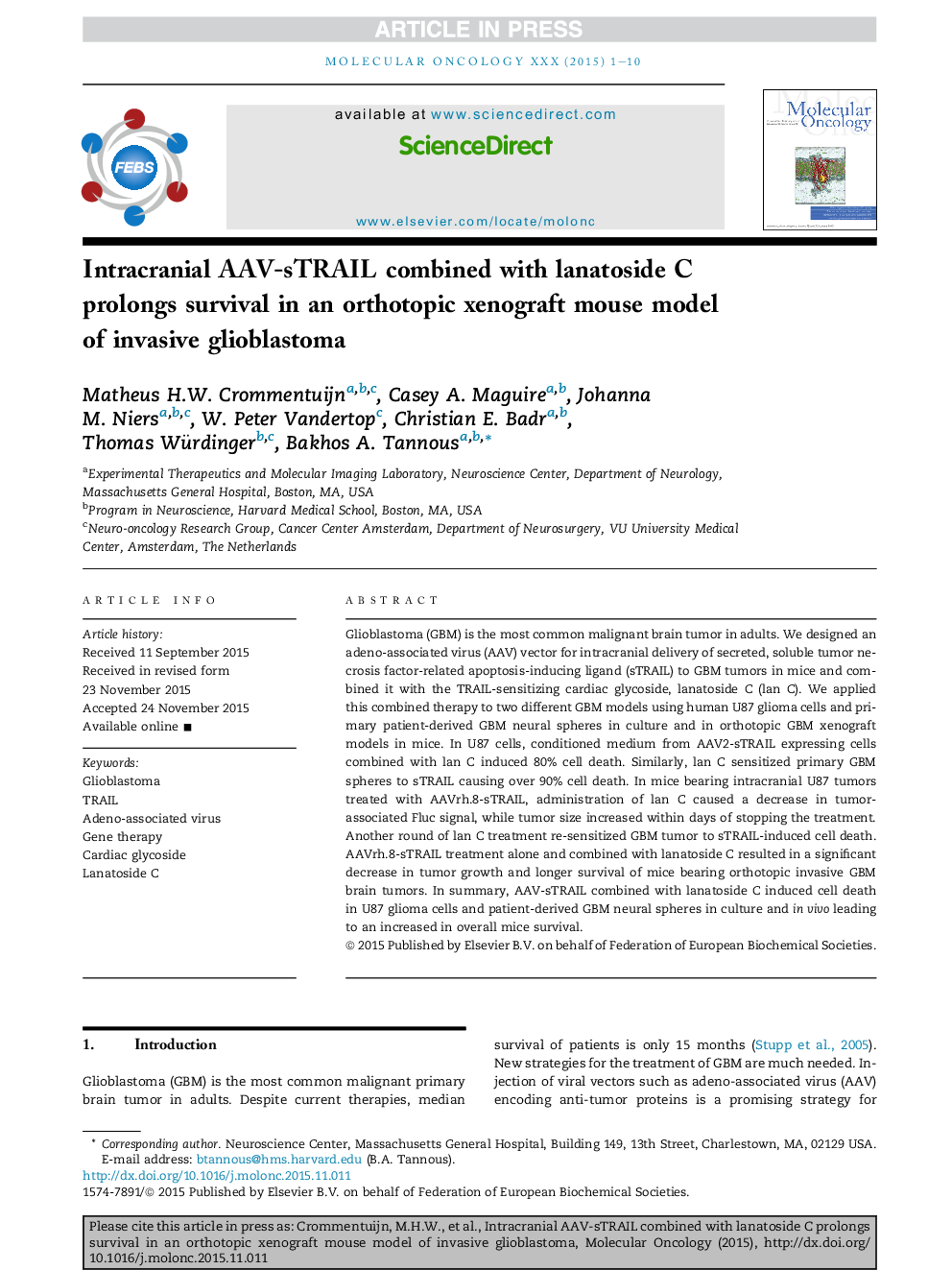| Article ID | Journal | Published Year | Pages | File Type |
|---|---|---|---|---|
| 10914568 | Molecular Oncology | 2016 | 10 Pages |
Abstract
Glioblastoma (GBM) is the most common malignant brain tumor in adults. We designed an adeno-associated virus (AAV) vector for intracranial delivery of secreted, soluble tumor necrosis factor-related apoptosis-inducing ligand (sTRAIL) to GBM tumors in mice and combined it with the TRAIL-sensitizing cardiac glycoside, lanatoside C (lan C). We applied this combined therapy to two different GBM models using human U87 glioma cells and primary patient-derived GBM neural spheres in culture and in orthotopic GBM xenograft models in mice. In U87 cells, conditioned medium from AAV2-sTRAIL expressing cells combined with lan C induced 80% cell death. Similarly, lan C sensitized primary GBM spheres to sTRAIL causing over 90% cell death. In mice bearing intracranial U87 tumors treated with AAVrh.8-sTRAIL, administration of lan C caused a decrease in tumor-associated Fluc signal, while tumor size increased within days of stopping the treatment. Another round of lan C treatment re-sensitized GBM tumor to sTRAIL-induced cell death. AAVrh.8-sTRAIL treatment alone and combined with lanatoside C resulted in a significant decrease in tumor growth and longer survival of mice bearing orthotopic invasive GBM brain tumors. In summary, AAV-sTRAIL combined with lanatoside C induced cell death in U87 glioma cells and patient-derived GBM neural spheres in culture and in vivo leading to an increased in overall mice survival.
Related Topics
Life Sciences
Biochemistry, Genetics and Molecular Biology
Cancer Research
Authors
Matheus H.W. Crommentuijn, Casey A. Maguire, Johanna M. Niers, W. Peter Vandertop, Christian E. Badr, Thomas Würdinger, Bakhos A. Tannous,
